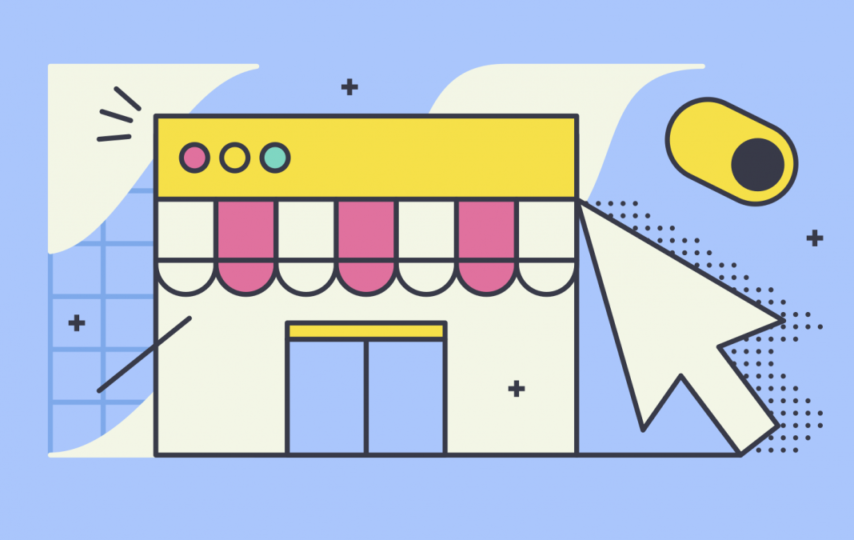Building an eCommerce website is an exciting challenge. To give customers an in-store experience online requires careful planning and great eCommerce UX.
What is eCommerce UX? In short, it is what your customer experiences online when they are browsing, shopping, or completing a purchase.
You may have heard about how our brains change when you walk through a door. In the same way, it’s easy to forget what shopping online feels like when you’re organizing your own eCommerce site. There are a million things to add and each one feels equally important. That kind of chaos is exactly what turns most shoppers off when shopping online.
Another possibility is that your site was clean and easy to navigate when you first put it together, but over time add-ons have left your eCommerce UX a mess.
In this article, we will cover 9 practical steps that will improve your eCommerce UX.
1. Remember your goal
It’s great to have a good-looking site. A well-designed eCommerce site should find ways to highlight your brand and show off new projects or partnerships.
But every interaction on your site needs to serve one goal. Sales.
Take a look at your homepage and walk through your current purchase funnel. With each step ask yourself: is this exactly what I need to make a purchase? If not, those areas are where you’ll want to start making changes.
Fill those pages with information and interaction that anyone visiting your site needs to buy your products.
2. Understand your buyer journey
The buyer journey can seem complex. It’s tempting to cover every possible path a customer might follow on your site start. That can overwhelm even the savviest seller. It’s smart to start with a simple buyer journey and build from there.
Your site should be a map of your ideal customer journey, pointing every site visitor to your end goal.
Here is a buyer journey example:
- Discover your site
- Search and browse products
- Scan product page
- Add product to cart
- Purchase
- Purchase confirmation and delivery
Use this outline to make updates to your site with the entire buyer journey in mind.
Discover your site
As soon as someone lands on your home page, tell them what you sell and where your business fits in your niche. Short product videos can be a great way to do this.
Search and browse products
You want these visitors to discover your products, so create clear navigation that directs them to those pages.
If you create an ad featuring a specific product, make sure the link leads your potential customer directly to the landing page for that product. If you want tips on how to create a great eCommerce landing page, check out this article.
For first-time site visitors, prominent display logos can help build trust. A great About page is also important.
Scan product page
Create the same layout for each product page. Make sure your product descriptions and photographs highlight the quality of your products. You’ll also want to show how shoppers can try them out- be creative!
Add product to cart
Use your eCommerce UX to build excitement with each step in the process. Shoppers crave this kind of feedback, successful completion of a task creates that feeling of “shopper’s high.” Let your shoppers know when they complete a task and make it clear where to go next.
Purchase
This step is essential, and there is a section dedicated to checkout later in this article.
Purchase confirmation and delivery
Purchase confirmation emails can seem like an afterthought, but they make a big difference if you want return business, and you do. Use these emails to help your customers rationalize their purchase and to get them excited about the products on the way.
3. eCommerce UX function over form
Most websites that fail aren’t ugly. In fact, they’re often great to look at. But a website needs to do more than appeal to the eyes if you want to make sales.
Bring your site designer into the conversation early, and work with them closely. Designers will be sensitive to issues that you might not be thinking about, like color-blind shoppers. These little details can help you create a website that customers return to again and again.
Design your site for scanning
Shoppers don’t really read websites, they scan for what’s important to them.
So, after you’ve created a rough outline of your website, menus included, ask your most impatient friend to take a look. Getting an extra pair of eyes is always helpful, but it makes a big difference for this step.
Make it easy for people to move from page to page
No matter where your customers start on their site, it should be easy for them to figure out:
- Where they are
- Where the homepage is
- How to find your products
Homepage UX tips
Your homepage is often your first chance to make an impression. Share customer testimonials, press highlights, product features and benefits on this important page.
eCommerce UX is harder for online stores that sell a lot of products. Most people become overwhelmed when given too many options. To save your shoppers from stress, limit your page and product categories. Break your shopping options into groups of 6 or less if you can.
Sales and limited time attractions are important too. Find a way to add these short-term offers to the homepage without crowding out other design elements.
4. Simplify the checkout
It’s not enough for your products to seduce if your checkout is slow. If your checkout forces a customer to start over or log in more than once as they purchase you’ve probably lost them.
First priority, find a way to let your users know what step they are on in the process and what they have left before a purchase is complete.
For example, let shoppers know what colors or sizes you have available in your product listing. Make your payment gateways obvious before a shopper adds something to their cart.
As you continue to develop your eCommerce UX, look for ways to simplify the process at each step in the checkout process. This will help reduce your abandoned cart rates.
With each change you make, test it for yourself. For instance, if there is a pop up when you land on your homepage, Don’t ask for the same information you need for checkout. Make any changes that can save your customers from having to type in the same thing twice.
Create a process that rewards your customer with each completed step.
5. Make it easy to ask questions
Shoppers don’t want to buy from a faceless robot. eCommerce has come a long way, but it is still scary to share a credit card with a new business online.
Show your customers that you are a real person. Add your business address, local phone number, and email address and let them know how they can contact you.
Always put reviews and testimonials somewhere prominent on your site as well. This goes a long way to building trust with anyone who visits your site.
6. Copy eCommerce UX that makes your customers comfortable
Everyone wants a unique selling proposition, but when it comes to eCommerce UX, copy what already works.
Shoppers develop habits when they shop online, and they will be looking for buttons and features on your site in the places that feel familiar. So, take a look at great ecommerce examples as you choose your layout, menus, and icons.
If you have a product that is new or unusual, explain it thoroughly. Videos can be a great way to feature a complex new product on your site.
You’ll also want to keep making regular small changes to your site over time. In addition to helping with SEO, this mimics the UX experience that shoppers get when a local store changes their store displays. This encourages them to buy.
7. Remove clutter
It’s hard to cook in a kitchen that has too much stuff on the counter. A great eCommerce website works the same way!
Create a shopping experience that respects the time, effort, and needs of your customers by cleaning house. Give shoppers the most important information at the top of the page. Then add details farther down to help customers who want more.
Break long product descriptions into smaller sections, and follow a consistent format for details like prices, sizes, and shipping.
Removing clutter is an ongoing process. Each time you look at your site, remove anything that could distract your site visitor from clicking further in.
8. Make it fast
Google has made site speed a priority and you should too. Shoppers won’t wait for a slow site. If it takes more than three seconds to load a page, you need to take a serious look at your site.
Resizing your images, removing gifts, and adding a lazy load plug-in can go a long way to improving your eCommerce UX.
You’ll also want to optimize your site for mobile. 46% of people prefer to use their smartphone for the entire purchase process. Dedicated apps are also becoming more important as mobile shopping increases in popularity.
9. One page, one CTA
It can be tempting to make multiple offers on your homepage. New products! Seasonal sales! Upsell offers! Exciting? Yes. Overwhelming? Yes.
To create a landing page or homepage that drives sales, focus each page on a single call to action. Use great images, simple copy, and clear directions that support that call to action.
The best CTA includes a keyword that your customer is searching for. It should tell your customer exactly what to do to what they’re searching for. If you are running ads with a specific keyword, include it in your CTA for maximum conversion.
We hope these 9 tips have been helpful. Use these simple eCommerce UX tips to create or update your eCommerce site and watch your ROI soar.
Author Bio:
Jana Rumberger is a copywriter and content manager for Selz e-commerce. She has expertise in strategy, selling products online, and small business solutions. Jana combines diverse experience in education, design, and manufacturing to craft engaging content.
In addition to her writing, she is an active visual artist and foodie in Portland, Oregon.








